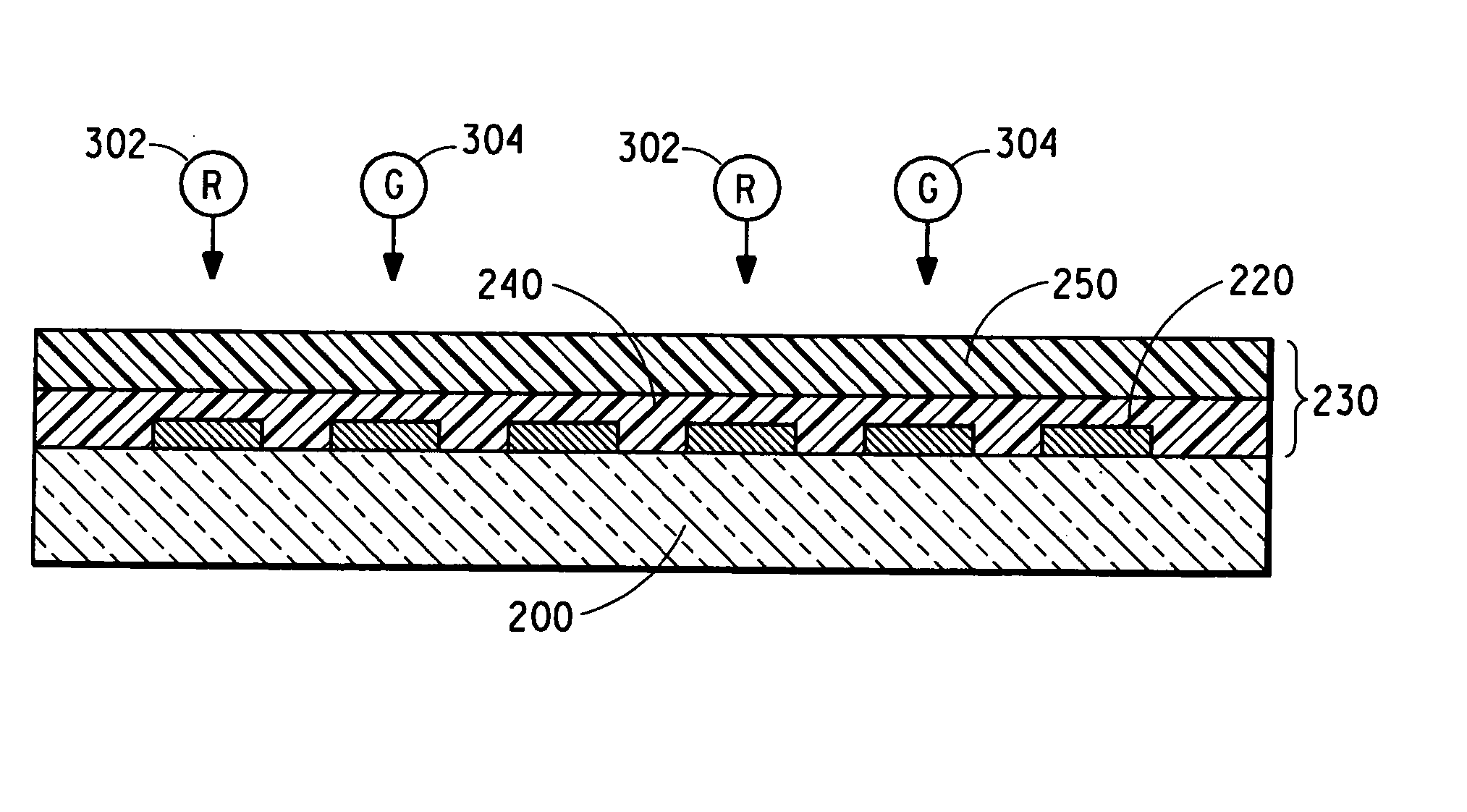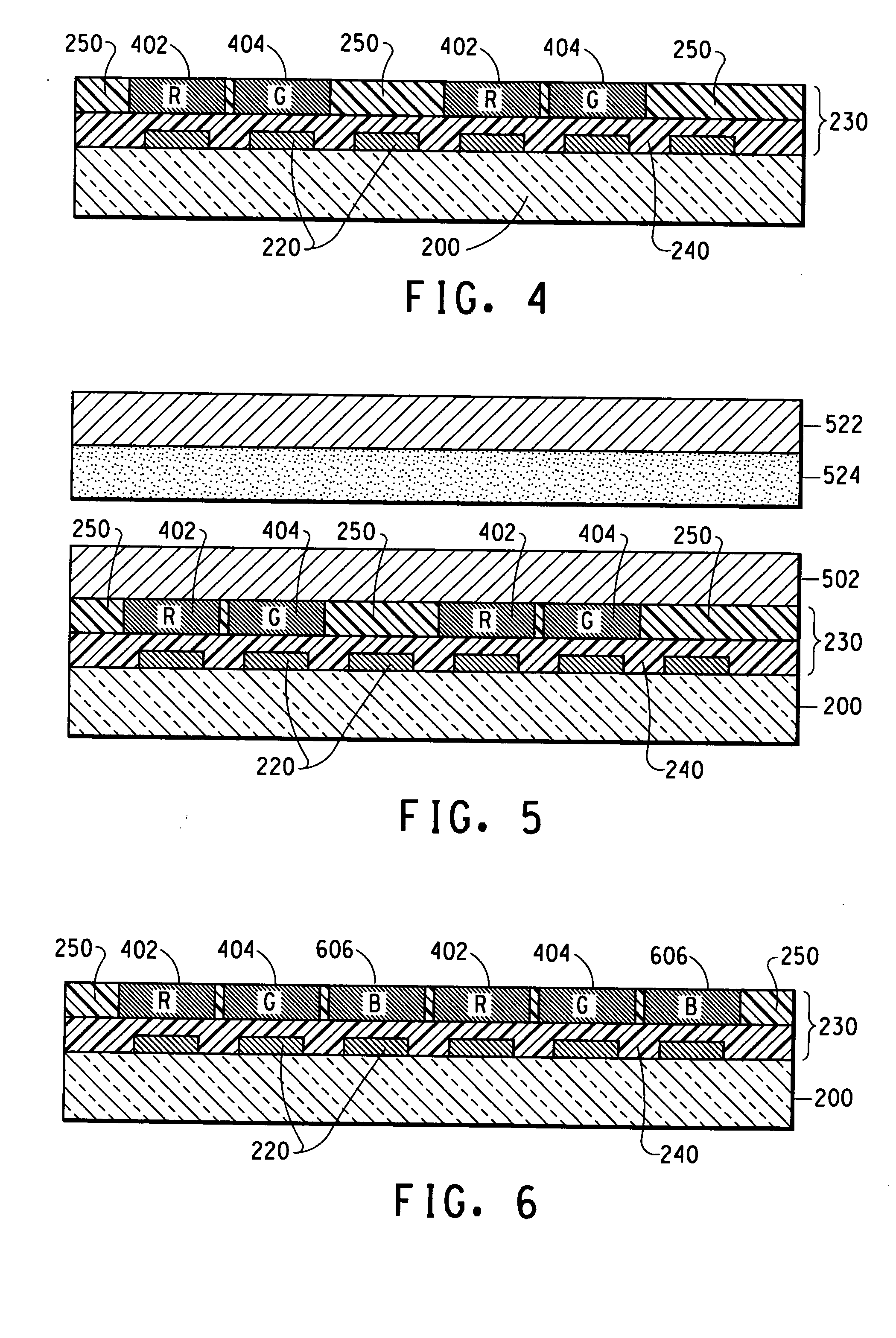Organic material with a region including a guest material and organic electronic devices incorporating the same
a guest material and organic technology, applied in the direction of solid-state devices, semiconductor devices, coatings, etc., can solve the problems of low efficiency, low efficiency, and poor efficiency of organic electronic components formed using the ink diffusion process, so as to improve improve the effect of “gray-scale” intensity control and reduce the efficiency of such devices
- Summary
- Abstract
- Description
- Claims
- Application Information
AI Technical Summary
Benefits of technology
Problems solved by technology
Method used
Image
Examples
example 1
[0146] This Example demonstrates that appropriate manipulation of physical properties of the organic active layer and the liquid composition provides organic electronic components in an organic electronic device without the need for banks or wells.
[0147] Organic electronic components are fabricated to include the following structure: ITO (first electrodes, or anodes) / buffer polymer / organic active / second electrode (cathode). The substrates are 30×30 mm (nominal) ITO coated glass. The charge transport layer is a PEDOT material (BAYTRON-P, Bayer AG, Germany). The organic active layers include a blue-emitting poly(spirobifluorene) material (a host material capable of emitting blue light without any guest materials). PEDOT is spin-coated onto a flat glass / ITO substrate at room temperature and then baked at approximately 200° C. for approximately 5 minutes. The film thickness is approximately 150 nm, as measured with a Dektec surface profiler. The blue-color organic active layer is then ...
example 2
[0151] An experiment similar to Example 1 is performed, using a full-color display with 200 micron pixel pitch, nominal. The diameter of the ink jet nozzle is reduced to approximately 20 micron, and a display with multiple colors in a pre-defined pattern is produced using this smaller diameter nozzle. The diameter of the red or green emitting zones is reduced to approximately 65 micron. Thus, this example demonstrates that the processes described herein can be used to fabricate full color displays with less than a 200 micron pitch.
example 3
[0152] Full color displays with red, green and blue polymer lines are produced using a procedure similar to that described in Example 1. An ink-jet printer with 40 nozzles is used for defining color pixels. The diameter of these nozzles is approximately 35 microns and the step motion between each drop is approximately 85 microns. The substrate is 100 mm×100 mm (4 inch×4 inch), nominal with a display area of approximately 80 mm×60 mm (3.2 inch×2.4 inch). The substrate does not include any well structures. The red, green and blue color stripes indicate: (1) a line pattern can be achieved without using bank structures, and (2) a full-color display can be made with 100 pixels-per-inch (equivalent to 254 micron pitch).
[0153] Full color, active matrix displays are also fabricated with a substrate with thin-film-transistor pixel drivers. An organic active layer is constructed between the pixel drivers and the ITO contacts. As in Examples 1 and 2, bank structures are not required for color...
PUM
| Property | Measurement | Unit |
|---|---|---|
| temperature | aaaaa | aaaaa |
| thick | aaaaa | aaaaa |
| FWHM | aaaaa | aaaaa |
Abstract
Description
Claims
Application Information
 Login to View More
Login to View More - R&D
- Intellectual Property
- Life Sciences
- Materials
- Tech Scout
- Unparalleled Data Quality
- Higher Quality Content
- 60% Fewer Hallucinations
Browse by: Latest US Patents, China's latest patents, Technical Efficacy Thesaurus, Application Domain, Technology Topic, Popular Technical Reports.
© 2025 PatSnap. All rights reserved.Legal|Privacy policy|Modern Slavery Act Transparency Statement|Sitemap|About US| Contact US: help@patsnap.com



